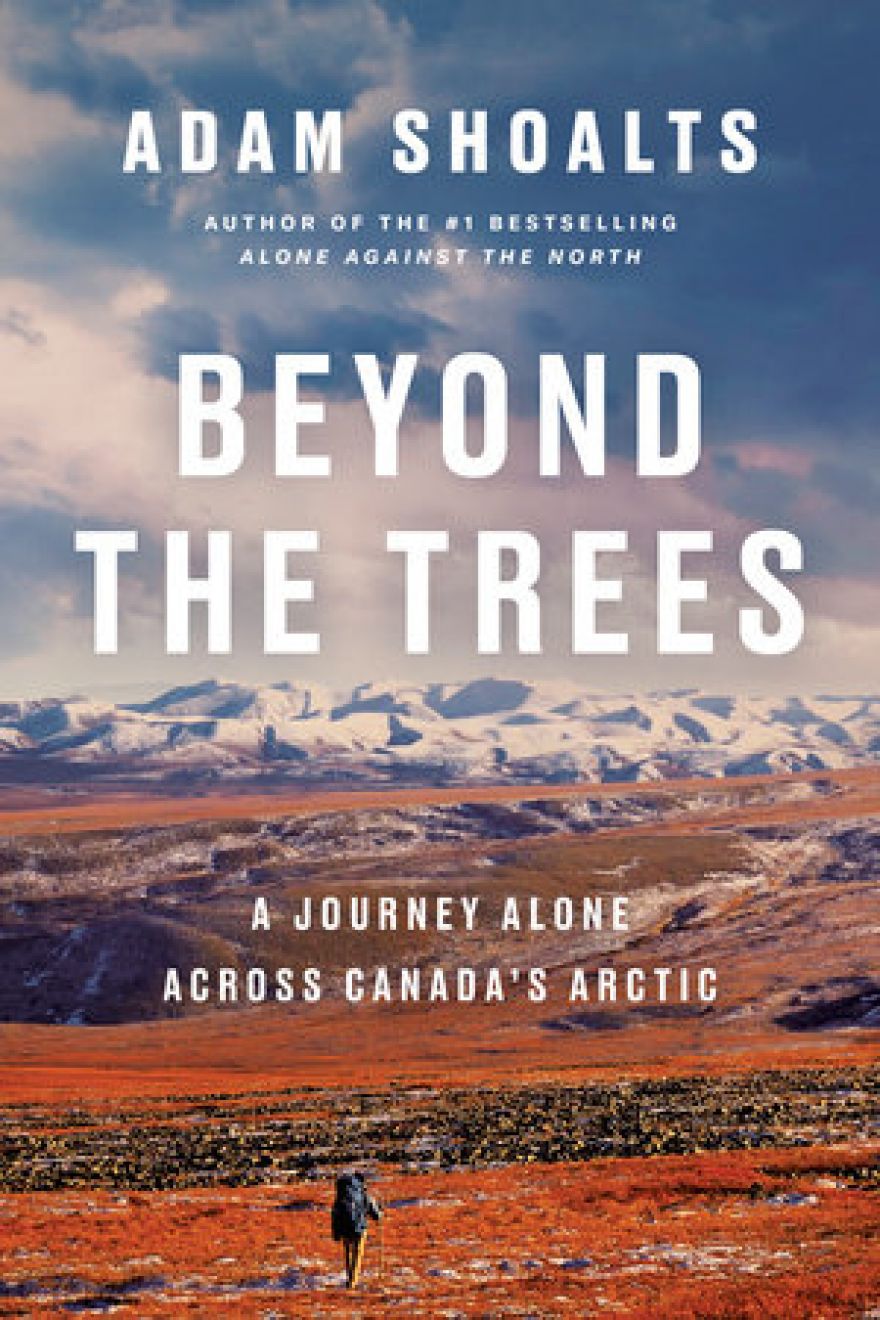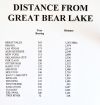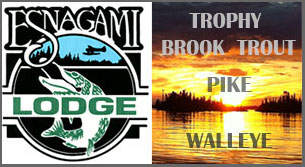Beyond the Trees – A Journey Alone Across Canada’s Arctic by Adam Shoalts
![]() Written by
Harold
Written by
Harold
- Published in Book Reviews
- Read 4980 times
- font size decrease font size increase font size
Before getting into the nuts and bolts of my review, I’d first like to pose a question.
How many of you have ever considered going on a nearly 4000 km “walkabout” across the top of North America, in some respects just for the fun of it, and then actually went out and did it – all by your lonesome?
Not many I’d be willing to wager, which is certainly one of the things that separates Adam Shoalts from the rest of us mere mortals.
In July of 2016, I was fortunate to meet Adam, albeit briefly, at Great Bear Lake, along with his sometime travelling companion Chuck Brill, who were about to canoe up the Dease River, and then trek overland to the Dismal Lakes – a trip that Adam repeated solo as part of his epic journey in 2017 (See Chapter 10 – Crossing the Divide) - and which I’m pleased to say, I was able to help out with in a very small way during the planning phase.
Having read and reviewed Adam’s two previous literary efforts, Alone Against the North and A History of Canada in Ten Maps, both of which were excellent reads, after finishing his latest, and giving some thought to how to best structure my review, I decided to try a somewhat different approach.
I did not want this to be a “same old, same old” type of review, and by that I mean simply pulling out various excerpts from the book, and then trying to explain to, and otherwise convince the reader that they should immediately run out and buy a copy, or not– which, by the way, you should do in this case - but rather go beyond the trees, portages, rapids, bugs and waterfalls, and offer my thoughts on why I believe that what he accomplished is in a sense allegorical, or a symbolic representation of how to get on in today’s complex, challenging ,and ever changing, fast paced world.
My own personal definition of what it means to explore, or to be an explorer, is someone who travels to places where no one has ever been, in order to find out what is there, or a person who investigates unknown regions, and to be perfectly honest, I’m not entirely convinced that what Adam has done on this, or any other journey he has undertaken, fits snuggly within that definition.
That being said, let me be clear, my personal views on this specific point are in no way intended to diminish his remarkable accomplishments in the slightest, and while he has certainly filled in some of the misleading, and inaccurate “blue squiggles” that appeared on his maps (current topo maps notwithstanding, apparently the Hare Indian River is not directly connected to Great Bear Lake – See Chapter 5 – Eastward Bound & Chapter 6 – Into the Swamp) Adam was not the very first to travel over the majority of the ground he covered, although many of those who went before him, did not do so on their own, which in many ways separates him from the herd in this regard.
While immersing myself in the book, there was something rattling around in the back of my mind that seemed vaguely familiar, particularly in terms of how he went about overcoming the immense physical challenges he faced on a daily basis, and his reaction when coming into contact with the few people he ran into along the way – and then it finally dawned on me – he reminded me somewhat of a modern day John Hornby.
During the early 1900’s, Hornby travelled over much of the same area as Adam did, and his prolific “bush” skills, stamina – he was reputed to be able to cover 100 miles in a 24 hour day carrying a full pack - and uncanny ability to survive under the most extreme and harshest conditions, in what, together with Antarctica, is arguably the most inhospitable region on earth – the Barrens – was the stuff of northern legends.
He was also very much a loner, by and large eschewing the company of others during his many wanderings throughout the north, a trait both he and Adam shared, as you will see at pages 178 to 180 and 184/185, even though in the latter instance he was offered (and declined) the opportunity to temporarily escape the swarms of hellacious insects that tormented him throughout his journey, and drink all of the orange juice he could handle!
And while there are certain similarities between the two, particularly in regards to their stamina and “bush” skills, there are also any number of important differences, the main ones being that unlike Hornby, who was known for his general lack of preparedness, Adam is meticulous in his preparation. He also had a specific objective in mind, again unlike Hornby, who seemed to wander about aimlessly in an effort to get away from it all – and most importantly – Adam has survived to tell his various tales. (Pages 237/238)
While Adam does provide a description of the topography, and the various kinds of wildlife he encountered, given the gruelling pace he had to maintain in order to cover the nearly 4000 km’s, from Eagle Plains, Yukon Territory to Baker Lake, Nunavut, all before winter set in, in fairness he really didn’t have the luxury of time to immerse himself in, and comment extensively on the beauty and majesty of his surroundings in any great detail.
And while some may find this a bit disappointing, as I alluded to earlier, his journey represents a great deal more than just another trip journal, paddlers guide, and/or photo journalistic endeavour – it’s something of a roadmap in terms of how to live, and otherwise succeed in the 21st century.
If I were to summarize Adam’s mantra, or “theme” throughout his trek, it would be that slow and steady will eventually win the race, and if you simply keep putting one foot in front of the other – you will ultimately get there.
And although at first blush, this may appear to be a somewhat over simplistic approach, I can assure you that it’s anything but, because in order for it to have worked so effectively throughout this astonishing journey, Adam had to demonstrate the highest levels of perseverance, adaptability, determination, single mindedness’s, steadfastness, focus and preparedness, during which time he always kept his eye on the prize, regardless of the challenges, and seemingly insurmountable obstacle’s he encountered along the way – of which there were many.
It seems we now live in a world where people not only demand, but also expect to have everything “yesterday.” Unlimited amounts of information – or in many cases misinformation - are at our fingertips, and woe is the service provider whose network does not provide instant gratification at the push of an icon, and in terms of planning ahead – hell - we all know that the future will take care of itself – right?
As for the concept of slow and steady, it’s clearly prehistoric – much like many of the rock formations, and perhaps even the numerous Muskox that Adam came across along his route – and if you are short sighted enough to ascribe to the theory that by putting one foot in front of another you will actually get somewhere – better check your rear view mirror – because chances are you are about to be trampled!
Fortunately, there are still a few people like Adam Shoalts around, who have the personal attributes and strength of character, together with having mapped out a thoughtful, focused and well reasoned approach to life and living, that frankly we ignore, or cast aside at our peril.
So regardless of your reason(s) for doing so, I’d encourage you to pick up a copy and perhaps take a page or two from Beyond the Trees, because you just may get a lot more out of it than you might otherwise expect – but come to think of it, why not take all 288 pages, and see where it takes you…









